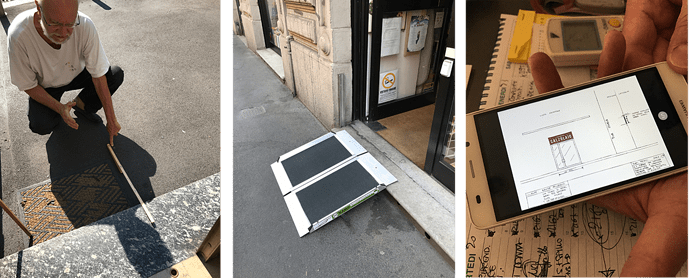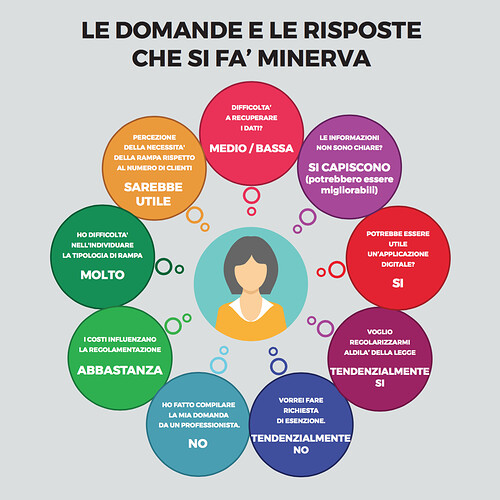Hello, here is an update about the other research track of the open rampette project: the procedure.
You should be familiar with Dioniso and Minerva by now (Dioniso representing the desires and issues of people with reduced mobility willing to enter a shop and Minerva representing all the shop owners that want to welcome everyone in their shops).
Dioniso might wonder what is actually Minerva doing to make her space accessible to everyone while designers @ WeMake are working hard on tech solutions to smoothen the calling process out.
Unfortunately Minerva cannot just buy a ramp and a doorbell, she needs to follow a bureaucratic procedure to let the Municipality of Milan check:
- The size and attributes of the ramp are correct
- If it’s possible to position the ramp in front of the shop without compromising the use of the sidewalk
- And more specific regulations…
The procedure is not exactly straightforward, so we set up a public meeting where we asked shop owners of the Isola neighborhood in Milan (our Minervas) to try completing the procedure under our own eyes, as you can see from the follow-up post at this link.

We received good insights that led us to the preparation of user interviews to be ran with shop owners at their shops.
“It’s not easy to understand when it’s necessary to turn to a professional…”
“It’s hard to get the info about the size of the ramp, length, width and inclination. How do I calculate that? How do I know my calculation is correct?”
We checked their own specific situations and asked questions like:
- How did you receive the information that you had to follow a regulation procedure?
- Have you ever seen the procedure?
- Did you try following the procedure on your own or you asked a professional to do the work for you?
- Were you able to understand what the procedure was asking and were you able to find that data?
Planning and running interviews was a lot of work but it also was extremely helpful from a design perspective. It helped us understanding a lot of nuances about the shop owners’ issues when reading and trying to fill the procedure and their needs, desires and commitment in solving the accessibility problem of their shops.
“We’d love to let anyone come into our shop”
“First off we will try to solve this issue on our own, and build the ramp ourselves. Only if necessary we will eventually contact a professional to do the work for us”
“I think it would be great to have the possibility to fill the procedure online, maybe on the website of the Municipality of Milan, with a tool that does the calculation while you enter your data”
Below you can see a radar chart showing the topics we covered during the interviews, any of the shapes is a representation of the profile of a shop owner we interviewed. By stacking the shapes you can see topics (issues, needs) that are more relevant (the highest relevant towards the outside of the radar).
Below you can see another chart that re-thinks the Minerva profile we initially invented, adding the real issues and needs of the shop owners we interviewed. Finally we have a real life Minerva profile that we can design a better procedure for!
Why was this helpful? Because it’s only with this knowledge that we can proceed in designing a tool to make the process for regulation procedure easier.
At the moment we’re using all this insights to create a prototype that we will show and test publicly in Milan on Wednesday, the 12th of July.
Please come at the meeting to share with us your questions and feelings, they will be extremely helpful and needed to design a solution that better fits you.


